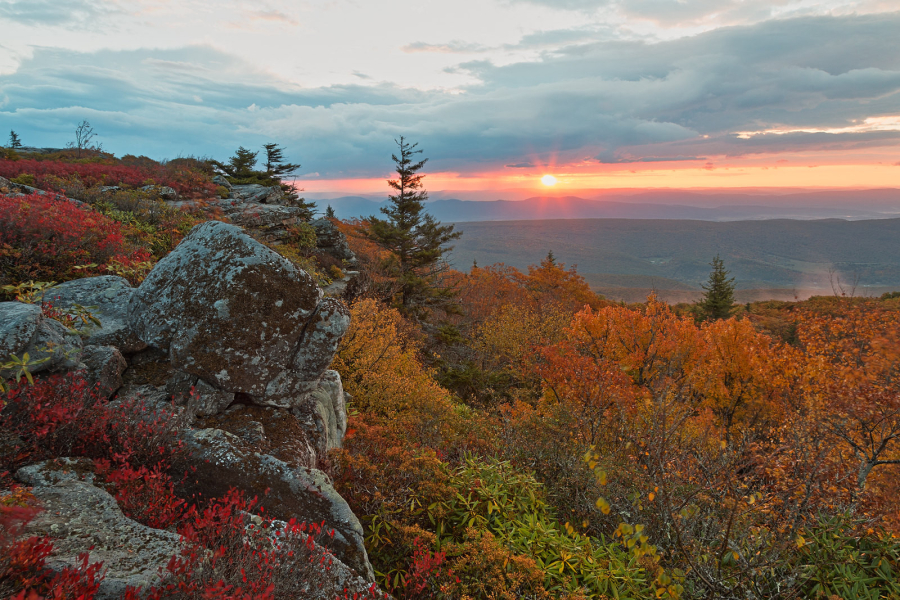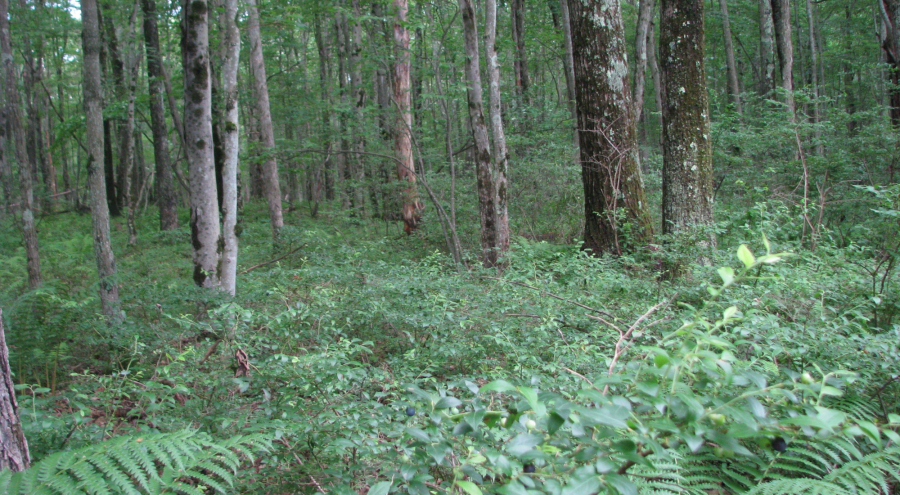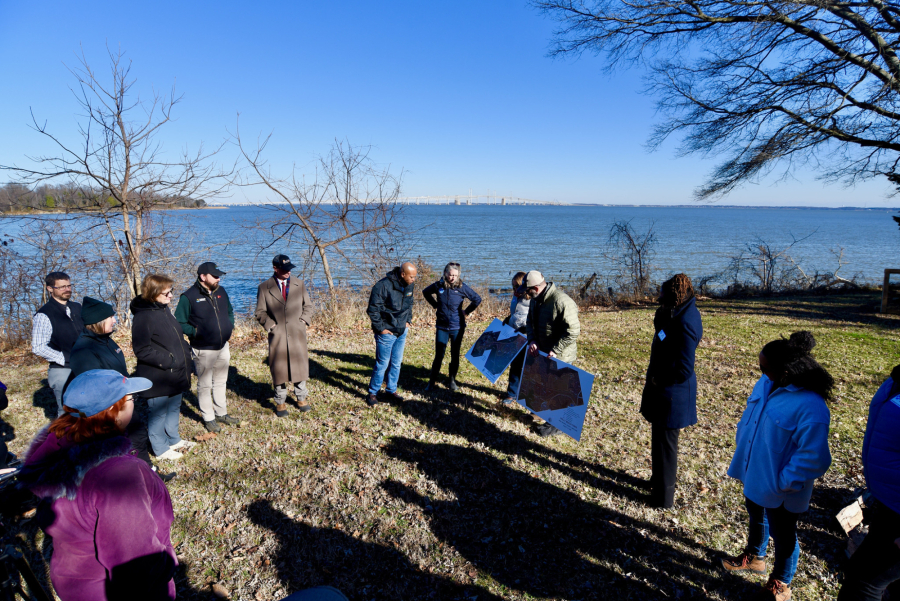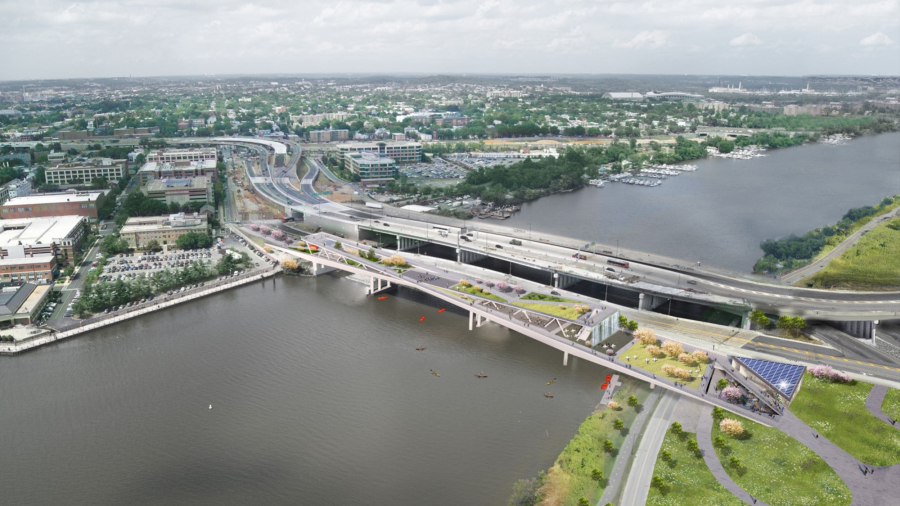Seven land conservation success stories from around the Chesapeake region
Each watershed jurisdiction has a hand in helping to meet our two million acre protected lands goal

Since 2010, the Chesapeake Bay Program has protected nearly 1.64 million acres of land, with the goal of reaching two million by 2025. Carried out by a variety of partners, this work is fundamental to Bay restoration. By protecting lands from development, we can help keep rivers and streams clean, improve habitat for plants and animals on land and in the water, reduce the impacts of flooding and boost the region’s outdoor recreation economy.
As we get closer to 2025, partners from state, federal and local governments, nonprofits and Tribal communities are working together to meet our land conservation goals.
We rounded up seven success stories from each jurisdiction of the Chesapeake watershed to give a snapshot of all the amazing work being done in the region.
Bear Rocks Preserve (West Virginia)
In Grant County, West Virginia, you’ll find one of the state’s most popular landmarks: Bear Rocks Preserve. Known for its flat sandstone-capped rocks, the Preserve is owned and conserved by The Nature Conservancy. In 2024, the preserve was expanded to about 2,000 acres after a 847-acre donation from Dominion Energy. The new addition includes beautiful scenic landscapes and ecologically significant habitats like open, shrubby landscape of mountain laurel, azalea and rhododendron, and bogs with cranberries and white-tufted cotton grass. With the increased acreage, The Nature Conservancy hopes to improve public access and recreational opportunities, such as adding new hiking trails and increasing the available vistas for breathtaking views.
Bear Creek Township (Pennsylvania)
In 2023, the Nature Conservancy (TNC) successfully closed on the purchase of 240 acres in Bear Creek Township, Luzerne County, Pennsylvania. This parcel of land will be added to the broad State Game Lands 91, right next to the 50,000-acre Pinchot State Forest. In addition to conserving land, this new protected area will offer vital habitat for migratory fish and serve as a source of drinking water for multiple jurisdictions. While it is just outside the Chesapeake watershed, this property represents all the benefits that conserved lands provide Pennsylvania residents. Funding for this project was provided by the William Penn Foundation via the Open Space Institute, the Pennsylvania Department of Conservation and Natural Resources, the Bureau of Conservation and Recreation and the Pennsylvania Game Commission.

Blackiston Wildlife Area (Delaware)
Located in Kent County, Delaware is the 2,200-acre Blackiston Wildlife Area. Managed and conserved by the Department of Natural Resources and Environmental Control (DNREC), Division of Fish and Wildlife, this area is known for its active outdoor recreation. Hunting and birding activities are the most popular given the conserved land is a habitat for a variety of species. In May 2022, DNREC added the 155-acre Meyer propertyto their conserved lands and expanded the public access to the Blackiston Wildlife Area. This was made possible through the Delaware Open Space Program, which funds land conservation and helps state departments with easements and acquisitions.
Delaware County, New York
In New York, the Watershed Agricultural Council (WAC) works with farm and forest landowners to increase the state’s acres of conserved land. In 2020, WAC hit a milestone by putting 3,399 acres of land into conservation easements in Delaware County, where runoff drains into the Susquehanna River watershed before entering the Bay. Landowners are compensated for putting their property into easements, which keep them from being developed. Funding for these easements came from various sources including the New York City Department of Environmental Protection and the U.S. Department of Agriculture.
Holly Beach Farm (Maryland)
Situated on the Chesapeake Bay just below the Bay Bridge, Holly Beach Farm is a nearly 300-acre waterfront property that was conserved over two decades ago. Featuring forested areas, open fields, a freshwater pond and beaches along the Chesapeake Bay and Whitehall Bay, the property offers crucial habitat for migratory waterfowl and nesting sites for herons and bald eagles. Originally, this site was part of a 3,000-acre estate belonging to a New Orleans industrialist. In the early 2000s, it was purchased by public funders and given to the Chesapeake Bay Foundation for conservation and environmental education. In March 2024, CBF transferred Holly Beach Farm to the Maryland Department of Natural Resources who now owns the property and plans to turn it into a Natural Resources Management Area, making the area available to the public.

Richmond Slave Trail (Virginia)
Near Ancarrow's Landing, along the south bank of the James River, lies the Richmond Slave Trail. This 4.5-acre strip of land has beared witness to the harrowing legacy of the African slave trade in Richmond, Virginia. The trail includes stops at ports, markets, burial grounds and churches all significant to this time in history. Up until recently the area was partially under private ownership by Norfolk Southern. The Capital Region Land Conservancy spearheaded negotiations to purchase the land from Norfolk Southern and in 2024 was finally able to place it under a conservation easement, ensuring its protection from development.
Despite the small size of the site, the significance of this conservation effort should not be ignored. By preserving this piece of land, the city will now be able to preserve the trail's historical and cultural heritage for future generations.
11th Street Bridge Park (D.C.)
In 2024, Washington, D.C. broke ground on an ambitious new green bridge that will connect communities separated by the Anacostia River. The bridge will be for pedestrian use only, running parallel to the existing 11th Street Bridge, and will include tree canopy, pocket-parks and access to the water. While it’s not your typical conserved land, the seven-acre park will add natural habitat to the area and significantly boost local recreation. The park is owned by the District Department of Transportation and was a collaborative effort between Washington, D.C., and local residents.

Seven paths to land conservation
All of these success stories show how land conservation doesn’t come in one form. From one acre to thousands of acres, every parcel of land protected has contributed or will contribute to the Chesapeake Bay Program’s goal to protect an additional two million acres by 2025.
As land continues to be conserved, we get closer to having cleaner water, more habitat and resilient communities.

Comments
There are no comments.
Thank you!
Your comment has been received. Before it can be published, the comment will be reviewed by our team to ensure it adheres with our rules of engagement.
Back to recent stories